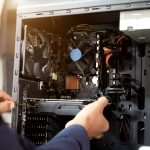AI vs. Burnout: How Smart Automation Is Rewriting Physician Workflows
Physician burnout isn’t a fringe issue—it’s a crisis that costs health systems up to $1 million per doctor each year in lost productivity, turnover, and compromised patient safety. As medical knowledge doubles every 73 days, clinicians face an impossible task: deliver world‑class care while navigating administrative backlogs and data overload. Enter smart automation, a suite of AI‑driven tools that promise to slash clerical burdens, improve decision confidence, and restore the patient‑doctor relationship. In much the same way that cutting‑edge AI platforms are now powering the rapid development of healthcare apps, these workflow solutions channel data directly into the hands of clinicians—so they can treat patients rather than chase paperwork (see how innovation is reshaping digital health workflows).
What Is Physician Burnout—and Why It Puts Everyone at Risk
Physician burnout extends beyond fatigue. It manifests as emotional exhaustion, detachment from patients, and a diminished sense of professional efficacy. According to the American Medical Association, more than half of all doctors report symptoms of burnout, a statistic that has climbed steadily over the past decade. This widespread phenomenon correlates directly with a rise in medical errors, driving up malpractice risk and jeopardizing patient safety. It also contributes to higher staff turnover—costing hospitals hundreds of thousands of dollars per replaced physician—and exacerbates clinician shortages. In other words, burnout is not just a personal issue for doctors; it is a systemic threat to the quality, safety, and sustainability of healthcare delivery. Leaders across industries have recognized that trust and resilience in remote teams are critical to overcoming these pressures, a principle highlighted by those building unshakeable confidence in virtual workforces.
How Smart Automation Eases the Load
Automation platforms today go far beyond simple voice‑to‑text or scheduling bots. Leading solutions use advanced natural language processing to transcribe patient encounters in real time, populating electronic health records with structured data and reducing documentation time by up to 40 percent. Intelligent order‑entry systems analyze each patient’s medical history, lab results, and current guidelines to recommend precise diagnostic tests or medication adjustments—mitigating cognitive overload. AI‑powered digital assistants manage referral tracking, appointment scheduling, and follow‑up notifications, freeing clinical staff from repetitive phone calls and manual data entry. Finally, predictive analytics tools continuously mine patient data to identify those at risk of complications—enabling early intervention and improving outcomes. This holistic approach to workflow automation mirrors how corporate wellness programs have become the ultimate status symbol in 2025, blending technology with well‑being initiatives to signal true organizational commitment.
Tangible Patient and System Benefits
The impact of automation is more than theoretical. At Mount Sinai Health System, implementing an AI‑assisted triage tool reduced emergency department wait times by 15 percent, ensuring critical patients receive care without delay. Similarly, a predictive risk‑scoring platform at the University of California, San Francisco, flagged high‑risk patients for targeted follow‑up, cutting 30‑day readmission rates by 10 percent. Mayo Clinic’s radiology department deployed an AI triage system that prioritized urgent imaging studies, shortening report turnaround times by 25 percent and alleviating radiologist backlogs. These improvements underscore a broader tech revolution that is rescuing modern workforces from burnout, proving that intelligent systems can transform stress into efficiency.
Making the Business Case: ROI and Adoption
Investing in smart automation typically pays for itself within 12 to 18 months. A mid‑sized health system might incur $2 million in licensing and implementation costs during year one, plus annual maintenance fees of $500,000. However, efficiency gains—such as reduced overtime, lower turnover costs, and fewer billing denials—can generate $1.2 million in savings in the first year, climbing to $3.6 million by year five. When turnover expenses and productivity improvements are combined, organizations often see a net positive return in under two years. Successful deployments always pair technology with practical methods to overcome burnout, ensuring that the human element remains at the core of each innovation.
Overcoming Hurdles: Change Management and Ethics
Deploying AI in a hospital setting is not without challenges. Clinicians may resist new workflows, fearing loss of autonomy or concerns over algorithmic errors. Leading institutions appoint “superuser” champions to facilitate peer‑to‑peer training and gather real‑time feedback to refine system configurations. Governance frameworks monitor AI outputs, detect biases, and establish clear liability lines should an automated recommendation lead to an adverse event. Equally important is maintaining rigorous data privacy and security—compliance with HIPAA in the U.S. and GDPR in Europe requires end‑to‑end encryption and strict access controls. Pairing these safeguards with targeted resilience programs gives leaders the tools they need to conquer burnout and foster lasting clinician well‑being.
The Road Ahead: Context‑Aware and Biometric AI
The next generation of burnout solutions will integrate AI with clinician wellness data. Emotion‑sensing interfaces under development can detect elevated stress through voice and facial‑expression analysis, triggering automated micro‑break prompts or adjusting caseload assignments. Predictive staffing models will rebalance patient loads dynamically, preventing any individual physician from becoming overwhelmed. Augmented reality assistants—worn as lightweight glasses—will overlay vital patient details, lab results, and treatment checklists directly into the clinician’s field of vision, reducing the time spent navigating complex EHR interfaces. Together, these innovations hold the promise of a zero‑burnout future, where administrative tasks are handled proactively and human expertise is reserved for patient interaction.
Conclusion
Physician burnout is a systemic risk that undermines patient safety, staff retention, and financial sustainability. Smart automation offers a scalable, proven path forward—eliminating routine burdens, enhancing decision support, and enabling clinicians to dedicate their time to healing. However, technology alone is not enough. Success requires ethical governance, thoughtful change management, and a leadership commitment to clinician well‑being. When these elements align, AI‑driven workflows don’t replace the human touch; they amplify it, ensuring that doctors spend less time on screens and more time on what truly matters—caring for patients.
Related: How State Healthcare Policies Are Affecting the Workplace in 2025














